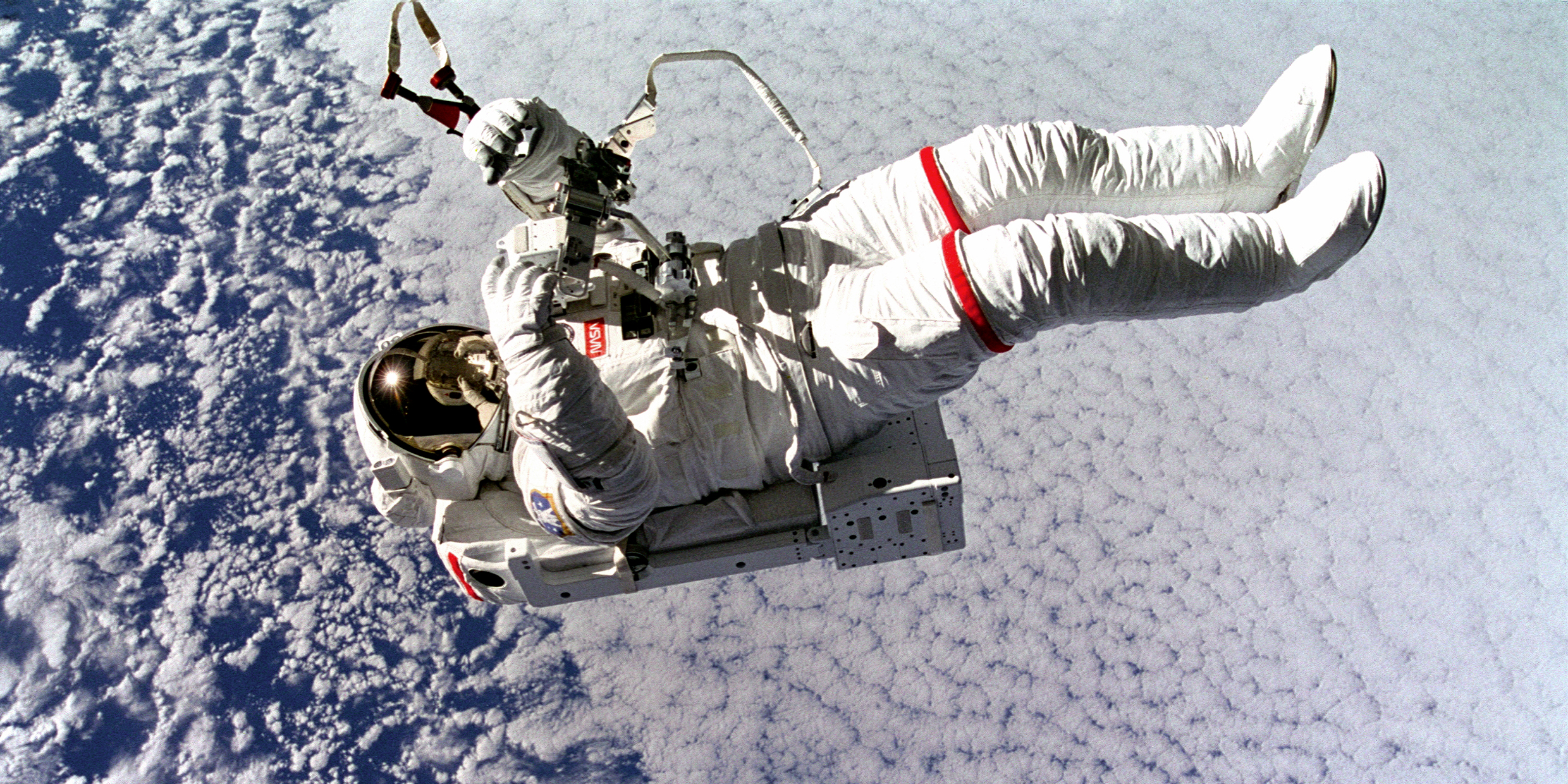Originally published 10 December 1990
Most of us have seen television images of astronauts floating in space.
The astronaut’s hand lets go of a tool and the tool floats, it doesn’t fall. Weightlessness, we call it. Up and down are all the same.
There’s no gravity in space, right?
Wrong! Near a planet there is certainly gravity. The astronauts floating in the cabins of their spacecraft are just a few hundred miles above the surface of the Earth. They are pulled downward with almost as much force as they experience on the ground.
Then why do they float? Why are they weightless?
For the same reason that we feel light on our feet when the elevator starts its descent. The astronauts are falling, as we are falling in the elevator. But they are also moving forward, parallel to the ground, at a considerable speed. As they fall, the surface of the Earth curves with them. They are falling in a big long circle that takes them right around the Earth.
But they don’t feel it. Inside their closed spacecraft they don’t perceive that they are falling. They might as well be in a place where gravity does not exist. The tool floats magically within the opened hand. The cup hovers above the table. Water poured from the cup drifts as weightlessly as thistledown.
Einstein’s answer
Albert Einstein died before the space age began, but he imagined what things might be like in a freely-falling spacecraft. He asked himself if there was anything that a resident of the closed cabin might do to decide if he were falling near the Earth or at rest in a place without gravity. And he decided that the answer was — or should be — an emphatic No.
“No” is a simpler answer than “yes,” thought Einstein. Things that seem the same might, at a deeper level of understanding, be the same.
In the early winter of 1915, Einstein published four papers in the proceedings of the Prussian Academy of Sciences exploring the implications of the “no.” In effect, he asked, “What must be the laws of nature if astronauts in a closed spacecraft are unable to decide, by any conceivable experiment, if they are falling near the Earth or at rest without gravity.” He came up with elegant new equations describing gravity and the fabric of space-time, called general relativity.
Curved space, the Big Bang, black holes, Einstein rings, gravitational lenses, a finite universe without boundaries, “Warp factor Five, Mister Sulu.” These are only a few of the dozens of ways general relativity has found its way into the popular imagination.
Sometimes new theories are forced upon us: Things happen that the old theories can’t explain, so we are forced to invent or amend. But that’s not what happened with Einstein. No unexplained observation required his invention. He simply wanted to make what we already knew more elegant, more simple.
Of course, Einstein knew that his theory must agree with experience. Even the most beautiful theory must be abandoned if it doesn’t account for what we observe. But general relativity is so remarkably beautiful that he — and almost all physicists — were convinced of its truth, though at the time of its invention and for a long time thereafter it could only be tested by a few tiny observable effects.
Testing the theory
In a [November 1990] issue of Science, Clifford Will, of the McDonnell Center for the Space Sciences at Washington University in St. Louis, summarizes 75 years of the testing of Einstein’s theory. It is an extraordinary record of human curiosity and technical ingenuity pushed to the limit.
The golden age for general relativity experiments did not begin until 1960, after Einstein’s death, mainly because the technology for measuring tiny spatial and temporal effects did not exist before that time. For example, Einstein’s theory predicts that clocks run at different rates on the top floor of a building and in the basement, because the flow of time is affected by gravity. But the difference is extremely slight and could undetectable until the advent of ultra-precise timekeepers.
General relativity has now been tested by many terrestrial experiments, by instruments aboard spacecraft, and by observations of distant pulsars and galaxies. The range and subtlety of the experiments is dazzling. All support Einstein’s theory and rule out most alternative theories.
It is unfortunate that Einstein did not live to see his theory so consistently confirmed, but he would not have been surprised. In 1930 he wrote: “I do not consider the main significance of the general theory of relativity to be the prediction of some tiny observable effects, but rather the simplicity of its foundation and its consistency.”
General relativity had its origin in pure thought, but has now been supported by a wide range of observations and experiments. It is the 20th century’s supreme example of the power of the human mind to make sense of the world.



